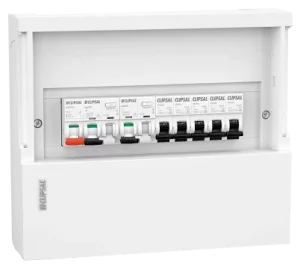A switchboard is a central component of an electrical installation, responsible for distributing electricity from the main supply to various circuits within a building. In Australia, switchboards are designed and installed according to the AS/NZS 3000 standard, commonly known as the Australian Wiring Rules, which outline the safety and performance requirements for electrical installations.
In New South Wales (NSW), switchboards must comply with additional regulations set by local authorities, including requirements for safety switches (RCDs) and surge protection devices. NSW regulations also mandate that older switchboards, which may contain asbestos or outdated fuses, be upgraded to meet current safety standards.
A typical switchboard in NSW will contain circuit breakers, RCDs, and main switches that control the flow of electricity to different parts of the building. Modern switchboards often include smart meters, which provide detailed information about electricity usage and enable remote monitoring by utility companies.

Switchboards are typically located near the point of entry for the electrical supply and must be easily accessible for maintenance and emergency shutdowns. Proper installation and regular maintenance of the switchboard are essential to ensure electrical safety and compliance with NSW regulations, particularly in residential, commercial, and industrial settings.